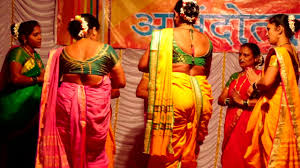The Indian greeting known as namaste is pronounced "namah-stee." "Namaste" is the traditional courteous greeting that is exchanged. It is also frequently used as a salutation to finish a meeting or other type of engagement. Sanskrit is the language that gave birth to the greeting known as "Namaste." Te, which means "to you," comes before Námas, which means "bow, obeisance, or reverential salutation." In other words, "greetings, salutations, or prostration to you." Greetings, salutations, and prostrations to you. The phrase "na ma" can alternatively be taken to mean "not mine," which is another possible interpretation of the word "namaha." It has the spiritual importance of minimizing or eliminating one's ego while one is in the company of another person. Therefore, it entails bending to others rather than oneself, and as a result, one must be receptive to the other who is being greeted. Namaste can also be interpreted to mean "the divine within me bows to the divine within you." This is the traditional meaning of the phrase. In spite of the fact that this is commonly interpreted to indicate prostration, in reality, it is a manner of paying homage to one another or demonstrating respect to one another. When we greet one another in today's society, this is the standard practice.
In Kannada, the same greeting is 'Namaskara and Namaskaragalu', in Tamil, 'Vanakkam' and 'Kumpiṭtu', in Telugu, 'Dandamu', 'Dandaalu', 'Namaskaralu', 'namaskaramulu' and 'Pranamamu', in Bengali, 'Nōmōshkar' and 'Prōnam'; and in Assamese, 'Nômôskar'.
The greeting expresses the reverence that Hindus have for the divinity that may be found in everything around them. Anjali Mudra is the name given to the motion that people do when they say "Namaste" while placing their hands together in the middle of their chest and bowing their heads. This is symbolic of the concept that every one of us possesses a Divine spark that can be found in our heart chakras and that this spark connects us to the Divine. The action is a sign that the soul of one person recognizes and appreciates the soul of another person. It is a salutation in the language of the common man; a greeting that is used for most purposes, including "Hello, good morning/afternoon, and goodbye." When encountering someone one is familiar with or complete strangers with whom one wants to start a discussion, it is standard practice for all Hindus, regardless of caste, creed, position, or place of residence, to exchange greetings with one another as a normal course of salutation. It is also frequently used as a salutation to finish a meeting or other types of engagement.
Namaste is used by Indians because it has a deeper spiritual value than just a greeting. It acknowledges the notion that the life force, divinity, the Self, or God that is within each individual is one and the same. Recognizing this oneness and equality with the meeting of the palms is a kind of honouring the deity that is present in the individual that we come into contact with. During times of devotion and prayer, it is fairly uncommon to observe Hindus not only saying Namaste to one another but also bowing and closing their eyes in an effort to concentrate on the spirit that lies inside. Occasionally, the names of gods, such as Hari Om and Ram Ram, are recited in conjunction with this bodily motion. Jai Shri Krishna, Namo Narayana, Jai Sriman Narayana, or Jai Siya Ram. It is also possible to utilize it with Om.



Shanti. "Ram-Ram" with the Anjali Mudra is still one more greeting that is pretty identical to Namaste and is quite commonly used in rural India. "Ram-Ram Sa" or "Ram–Ram Dada" and so on and so forth. On the other hand, Namaste and Pranam are not the same thing.
Pranama, again a Sanskrit word. 'Pra' and 'Anama' are the two words that come together to form it. The words "Pra" and "Anama" signify "forward," "in front," "before," "very" or "very much," and "bending or stretching," respectively. The phrase "bending, bowing in front" can also be translated as "bending much" or "prostration." The phrase is a courteous greeting used among Hindus. It literally means "bowing forward" as a sign of respect for a deity or an older person.
Namaskar is one of the six types of Pranamas:
Ashtanga (Ashta-eight; Anga-body parts): Touching the ground with knees, belly, chest, hands, elbows, chin, nose, and temple.
Shastanga (Shashta-six; Anga-body parts): Touching the ground with toes, knees, hands, chin, nose, and temple.
Panchanga (Pancha-five; Anga-body parts): Touching the ground with knees, chest, chin, temple, and forehead.
Dandavat (Dand-stick): Bowing the forehead down and touching the ground.
Abhinandana (Congratulations to you): Bending forward with folded hands touching the chest.
Namaskar (Bowing to you). The same as doing a Namaste with folded hands and touching the forehead.













Comments
This is not the blogpost platform for advertisement. Well, if you have any such openings kindly share in other social medias
Sphoorthi